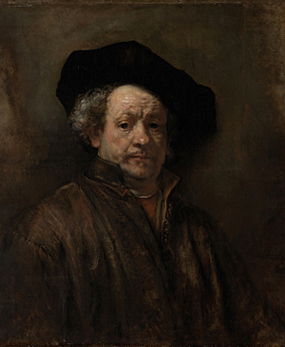1.5.24 — Europe’s Theme Park
Back in museums with the new year? I, for one, had forgotten so much. Just for starters, I had forgotten the glorious yellow in Harvesters, by Pieter Bruegel the Elder at the Met.
 Or had I? The Museum had closed its galleries for European painting for the Skylight Project, replacing the glass in each and every one. Half reopened in December 2020, and my experience of them began with just those fields of wheat. How much has the illumination improved, how much was I merely primed to look for light and color, and how much of the credit goes to Bruegel alone? Even now that the rest has reopened, I cannot say for sure, but the collection looks great all the same. It also looks at once classic, tendentious, illuminating, and confusing—and I pick up from where I left off in 2020, so by all means check out my longer report then as well as this one.
Or had I? The Museum had closed its galleries for European painting for the Skylight Project, replacing the glass in each and every one. Half reopened in December 2020, and my experience of them began with just those fields of wheat. How much has the illumination improved, how much was I merely primed to look for light and color, and how much of the credit goes to Bruegel alone? Even now that the rest has reopened, I cannot say for sure, but the collection looks great all the same. It also looks at once classic, tendentious, illuminating, and confusing—and I pick up from where I left off in 2020, so by all means check out my longer report then as well as this one.
If you are expecting natural light flooding the galleries, you can only be disappointed to see thousands of bulbs behind the thousands of new panes of glass. But then, the Met is nothing if not controlling, and they seem just right for European painting. They bring out the depth and warmth of Bruegel’s yellow. They also bring out darker woods by Peter Paul Rubens in the same room and some startling curatorial choices. So why look up? Look around you—and not just for the mutual flattery of art and light.
As the leap ahead from Bruegel’s Mannerism to Rubens in the Baroque suggests, the rehanging in 2023 is more provocative than ever. The provocations have changed, to be sure, but not by much. The Met has had three years to rethink its choices, but it is telling the same story. Its account of the Renaissance now begins with “faces,” from both Italy and Northern Europe. One could almost forget how different the two were in style, purpose, and media. One might not so easily forget the double portrait by Filippo Lippi in Italy, with the solidity of his teacher, Masaccio, and a meeting of the sexes at a window ever so close to home.
More provocative still are the themes, again one to a room. As present times require, they describe art as instrumental. Not just one Madonna but two by Giovanni Bellini, early and late in his shift to painting in oil, fall under “Trade and Transformation in Venice—and so does the pain in a Lamentation by Vittore Carpaccio. “Faith and Love in Venice” has room for a more otherworldly love, in the eerie light of Savoldo. Even with Peter Paul Rubens, in “Flesh and the Spirit,” I leapt right to the spirit, for Saint Francis adoring a Holy Family so perfect that it excludes Joseph. I would have admired an independent Dutch nation in “The Patriotic Landscape,” but I was too busy with the variety of skies and worldly pursuits.
We are talking race, class, and power in a proper postmodern way. Does it matter that the prize portrait in “Portraits and Power” is not of wealth and power, but of Juan de Pareja, the slave whom Diego Velázquez set free to become a painter? Did Giambattista Tiepolo include blacks in his busy heavens? It is a game of Where’s Waldo to find out. It might be best to take all the rooms as a game, asking you to guess the theme. Please do not criticize yourself if you fail.
One last provocation is easier to ignore. Museums these days make a point of modern and contemporary art, like the Met itself with its new hanging for Korean art. Almost halfway through, I thought that these galleries had escaped that fate, but no. Pablo Picasso in his Blue Period turns up with El Greco, Salvador Dalí with Spain, and Max Beckmann with Francis Bacon on the way in. None look the better for it. A “focus gallery” for artists in their studio has room for Kerry James Marshall, Elaine de Kooning, and more.
Still, all is not lost, not with a collection like this. The Met has reined in the worst as well. It now as clearer divisions by time and place than in 2020. Just as much, the drawbacks can become advantages. Taking away separate wings for the Renaissance translates into a smooth arc from the origins of landscape and illumination to the real thing. The Baroque becomes not just a rebellion, but also an evolution. And the themes challenge you to retrace that evolution.
The return of European painting is not just a provocation. It is also a recovery and a relief. One may never feel close enough to Rembrandt in a room the size of a football field, but a full wall for Jan Vermeer is something else again. One can also appreciate the span of European art. It has room now for the Americas, in the eighteenth century, in a room that (surprise!) opens onto the Met’s American wing. A room later, both wings contain musical instruments, but each has a music of its own.
Read more, now in a feature-length article on this site.